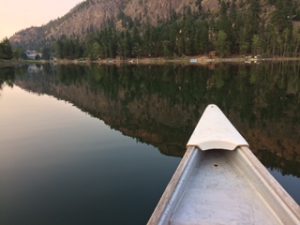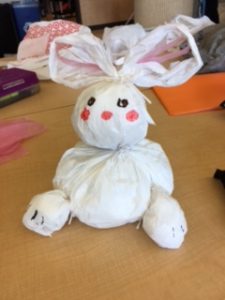Here are a selection of my reflections throughout the ETEC 533 course:

Auto e-ography
The diversity is our class will make for very interesting discussions. I appreciate that not everyone in our ETEC 533 course is a teacher, and that within the teacher group there are elementary, middle and secondary teachers represented as well as those that work with ELL. I think that having classmates from a variety of backgrounds and experiences will add to the discussion. As a middle school teacher, I like to see where students have come from and where they are going.
Interview
I appreciated taking the time to interview a colleague and to get their thoughts on their use of technology in their math and science classroom. It was interesting to see that my colleague felt very strongly that they wanted to include more technology into their classes but were so frustrated that there are many roadblocks in their way. As an administrator, what can I do to help alleviate or remove these roadblocks? Helping to secure additional funding for technology would be a “simple” solution, though one that is definitely a challenge. One area that I can assist in is the creation of a better booking system so that the technology that we do have is utilized in a much more efficient manner. Another area is by helping teachers find the professional development opportunities (or to create these opportunities) for them to learn how to use technology in meaningful ways in their math and science classrooms. The opportunities to provide differentiated instruction, to address misconceptions and assumptions and provide hands-on experiences call all be met through the use of appropriate technology. Many teachers are already doing that, but many are nervous to try or don’t know where to start. I could help by being a sounding board or a resource – both of which are very do-able from the start of the school year.
The Framing the Issues assignment has also given me the opportunity to address this gap in professional development from the perspective of academic literature. It is incredible that this issue has been going on for so many years, and educators of all grade levels are still feeling this way.
CiteULike
http://www.citeulike.org
I’m not sure what I am doing wrong, but my request to join the Group “ETEC 533” has been pending approval for several days. I have been searching for academic literature for my Framing The Issues Assignment and the site is interesting, but I much prefer the UBC Library website and search engines. Using my knowledge from ETEC 500 has served me well for finding academic articles. Perhaps once I join the ETEC 533 group I will feel differently as there may be some features I am not aware of at present.
(Note: As of August 9, 2017 my request to join ETEC 533 Group is still awaiting approval)
TELEs – Tools of the Trade
TELEs are something entirely new to me. I feel a bit silly saying this, but I had no idea that so many Technology Enhanced Learning Environments existed. I really enjoyed spending the time trying our the variety of TELEs in module B and plan on spending additional time looking at them in more depth at the end of this course. TELEs provide the opportunity for students to engage in critical and complex thinking and engage students in hands-on, minds-on learning. I can imagine how captivating these experiences would be for my middle school aged students who love the hand-on learning. There are times when I cannot do as much hands-on experimentation for example due to lack of lab space, materials, funding, etc. These free or low cost TELEs can give students the opportunities and experience in both an individual or collaborative setting. Another aspect of TELEs that I like is that as a teacher I am not the “sage on the stage”. Students are put front and centre in their learning experience with my taking a more supporting role. I have always tried to take the supporting role, however, students often look to you as the lead learner because that is what they know. TELEs naturally allow for more constructivist learning to occur – and students will benefit. If I was still in the classroom next year, I could realistically see myself using WISE in my grade 8 science students. I would also like to look into doing a school-wide JASPER inspired TELE with either each grade group contributing one section, or doing it single-grade wide (we have 12-13 classes per grade at my school) and having each “pod ” responsible for creating one aspect.
Learning from Classmates: WISE: Great Pacific Garbage Patch
Padlet to the Rescue: Taking Action To Reduce Plastic In Our Ocean (Leo, 2017). This was one of the most influential posts in this course for me because it combines two of my passions: science and social responsibility. Using the WISE “Great Pacific Garbage Patch” addresses the very real problem of the environmental impact of plastic bags and, using a mockumentary format, engages the students. Tying in a Padlet to have students connect to their personal experiences was a very strong addition.
This year I had the opportunity to create upcycled projects using discarded plastic bags. Students diverted these plastic bags – thousands of them – and created a variety of usable materials. Materials such as sleeping mats for the homeless, Daily Physical Education (DPA) Kits for their classroom, jewelry, wearable flip flops, bracelets, coffee sleeves and much, much more. What an amazing opportunity to combine a number of curricular areas (Social Studies, Language Arts, Science, Math, ADST) and fuse high and low tech learning.
Leo, C. (2017). Padlet to the Rescue: Taking action to Reduce Plastic in the Ocean. Retrieved from https://blogs.ubc.ca/stem2017/2017/06/30/padlet-to-the-rescue-taking-action-to-reduce-plastic-in-the-ocean/



Synthesis
This was perhaps my favourite assignment of the course. I found this incredibly useful because it forced me to consolidate my thinking about the different TELES and look at the benefits and drawbacks of each. There was a lot of learning happening in Module B and my brain felt very full! Compartmentalizing the TELES (for me in a nice linear chart) was very helpful and allowed me to effectively compare and contrast each of the environments.
Embodied Learning and Virtual/Augmented Environments
I must admit I am terrified of these concepts! I do not have much experience in this realm and honestly am not sure where to start. I started on the readings, however, I found them too over my head and so I switched my focussed to mobile environments. I think I struggled with this area as I have had zero prior knowledge. I didn’t find that the course scaffolded this section very well and because we didn’t have to choose this section, I skipped it and chose something I was a little more comfortable with. In hindsight I wish I had pursued it, but I didn’t feel there was enough time to get an understanding of the basics. I would like to go back and look take another look at the readings after perhaps reading Virtual Environments 101.
What About Math?
I really enjoyed this course and all of the practical and experiential opportunities for students – in science. However, I was often left wondering how I would apply some of the concepts that we learned about (embodied learning for example) in math class. Is there a mathematical equivalent of WISE? This is of interest to me as I have found that students have a more of a natural interest in science than they do math. Anytime I can find something that makes math relatable, intriguing, or engaging, I am eager to learn. I had hope there would be a more equal focus on math and science.
Resource Sharing Contributions
I shared two resources that I have found particularly helpful in teaching math and science. The first is a website run by Partners in Research (PIR Canada) that has a number of free online programs for elementary to high school students.
http://www.pirweb.org/pir/en/educational-programs/

One program is called VROC (or virtual researcher on call) that connects specialists in the field with students) and the other is PIR Live Events (webinars). I have done several PIR Live events and been a part of webinars with inventors in the UK. Webinars cover a variety of STEM topics – from makerspace to cancer research. Students can pose questions and “chat” to the guests in real time. It was a great opportunity for students!
They also have their own YouTube channel and PIR TV to get students interested and enthusiastic about STEM and its real-life applications.
The second resource is Hopscotch. For those new to computer programming, the Hopscotch App provides a great opportunity for students to learn in an engaging way. Hopscotch uses drag and drop format so it is ideal for elementary and middle school students. Decimals, sequencing, co-ordinates, and negative numbers are some of the mathematical concepts that “come to life” as students program their own games and activities.

Both of these resources provide students with hands-on learning and experiential opportunities in math and science.